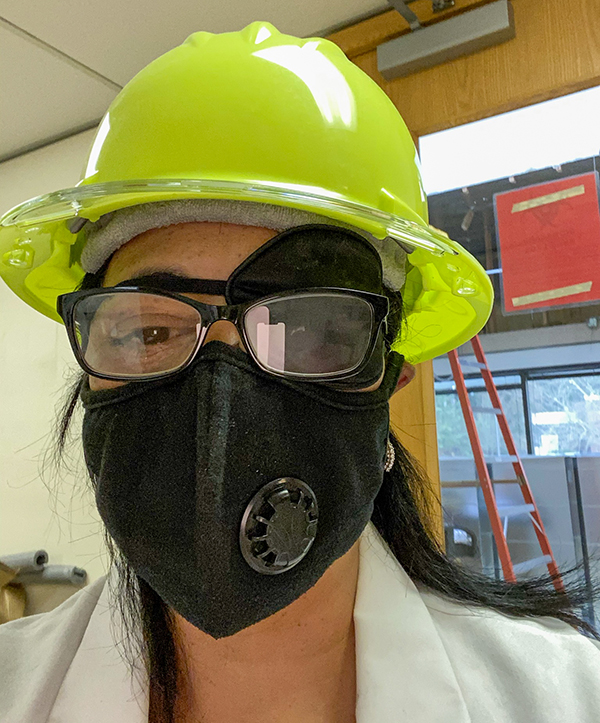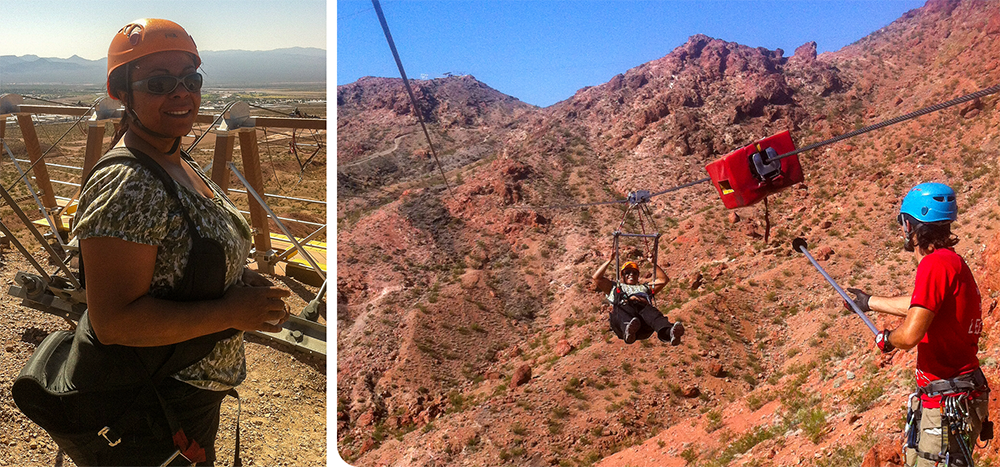From manufacturing oligonucleotides to keeping new product introduction teams aligned, to validating new facilities, to leading blue-sky innovations, Carla McDowell-Buchanan has worn an exceptional number of hats during her 14 years at Cepheid. Below, she explains the game-changing developments she’s helped launch; reflects on how both the company and its Bothell, Washington, location have evolved over the years; and shares her excitement about taking on new challenges—including as a leader.

What do you do at Cepheid?
I’m a principal scientist at our Bothell, Washington, location, which is the company’s main raw material reagent manufacturing site. There’s also an R&D component to our work that helps keep that pipeline going with new reagents, which expands our current technology capability.
My main focus is looking for opportunities to expand the value proposition of the Cepheid platform, and do everything we can to innovate first and stay ahead of the competition. I’m also now leading a team of scientists working on an innovation project involving new chemistries to enhance our tests for better use in point-of-care settings.
Tell us about your path to Cepheid—and since joining.
The work I did for my doctorate was a nice fit with what we do here. I studied electron transfer mechanisms in DNA repair resulting from the photoproducts formed in DNA, and much of that scientific understanding directly aligned with Cepheid’s molecular diagnostic technology. One of the first chemists to work here at Bothell was also a postdoc at the University of Washington, where I went to school, and they initially brought me in for a temporary position, covering someone’s summer vacation. They liked what I was able to contribute, and in 2007, I was hired full-time in oligonucleotide manufacturing.
Cepheid was much smaller then, but we were going through what at the time was a huge growth period for us, and I was able to scale up and improve some different processes so we could synthesize higher quality oligonucleotides at a larger scale. After about a year and a half, the Bothell site was getting large enough that we also needed to start establishing more formal processes for design control and product transfer, and I took the lead on developing those departments. That gave me some expertise in validating chemical reagents, oligonucleotides, and qualifying instrumentation—which then led to a role as a technical liaison, where I was part of the core teams not only here but also at Cepheid’s locations in Sweden and Sunnyvale, California. I helped keep everyone in sync on new products required to be transferred to manufacturing.
From there, my responsibilities became multi-layered—for about five years I managed Product Transfer, Program Management, and worked as site liaison for new product introductions. As our real estate in Bothell grew, we needed someone to handle facility validation—things like HVAC systems, above-ground waste tanks, and moving chemistry and oligo manufacturing, where you have to decommission and then re-qualify all the instruments. I wasn’t an engineer, but I’d learned a lot about validation protocols and systems, so I worked on those efforts for about a year and a half. We were also able to make some changes like adding large-volume solvent delivery systems. Then I moved into doing innovation, where I am now.

That’s a lot of different projects! Were you “tapped on the shoulder” most of the time, or were the moves your idea?
I’d say it’s mostly been me raising my hand—recognizing a gap and trying to put something in place to alleviate the pain points. But part of that comes from listening to the vision of our leaders. My first innovation project was sparked by a presentation from our former CEO, John Bishop. I remember he had this slide of our GeneXpert® Infinity-80 system, with DNA, RNA, cells, and proteins all run on that same device. I’d worked with proteins before I came here, and I thought, “I wonder if there’s some way to integrate protein detection on top of the nucleic acid?”
My prototype that involved detection of different types of biomarkers that took about three years for a proof-of-principle prototype. [Editor’s note: This achievement earned Carla the Excellence in Innovation Award from Danaher, Cepheid’s parent organization, in 2020.]
How would you describe this current moment, for Cepheid in general and the Bothell site specifically?
Compared to a few years ago, I do see a difference in our culture—especially here at the Bothell site. Back when I was the technical liaison between the three locations, this site was so much smaller, and it was more like a startup. It was really Sweden and Sunnyvale that had the oversight and regulatory processes in place to get their outputs onto shelves and into clinicians’ hands. At our size, and with our R&D mindset, adding those layers of accountability—things like specification settings and addressing nonconformances—was a challenge.
But we’ve grown. And I think today, people are much more willing to speak up in a meeting and share a new idea, rather than working on it in the background until they find something that works. Maybe your idea doesn’t end up being the one we use, or maybe it’s combined with something else. But you definitely have a safe space to talk about it and contribute.
At the Cepheid level, I think what we’re seeing now—especially since joining Danaher in 2016—is a real commitment to stay ahead of disruptive technology in our space. That’s important, because it’s what will allow us to stay relevant and realize the potential of all these ideas we have to help patients by developing new instruments, chemical reagents, and detection modalities. Cepheid has earned a lot of respect globally on the quality of our diagnostic tests, and we aren’t willing to bend on that. But our leaders are very focused on making sure innovation is happening, and they carve out the resources and opportunities for our scientists to think creatively and come up with better solutions.

What are you looking forward to right now?
At the moment, I’m so immersed in getting over a technical hurdle related to the current innovation project that it’s all I can think about! But I am pretty excited to someday see this project go from the blue-sky phase we’re in now all the way through to advancement in a technology that the company can use. My director has a strong background in the assay development space we are interested in, so he understands what we’re doing and he’s very supportive. He’s also exposing me to the higher-level aspects of the projects I’m working on—I sit on the steering committee, for example. Even at this phase, there is some level of structure moving the project forward, and with that comes a commitment from leadership to give us what we need to realize the vision. I started out working on it solo, but I’ve since been able to grow the scientific team to five. If we can eventually see all that work turn into something patients can use, that will be very rewarding.
I’m also looking forward to growing my leadership skills, now that I have the opportunity to manage multiple scientists and especially because we’re working across two different locations. I’m learning how to keep communication going and make sure people are engaged, feel valued, and know that they’re part of a team. I’m trying to do for them what my director does for me—if there’s a roadblock, I figure out what I can do to remove it. I do gravitate toward the early, pre-concept work I’ve done as a bench scientist. It intrigues me and feeds my curiosity. But I feel like I’m also gaining a new appreciation for being a leader.

Leave a Reply